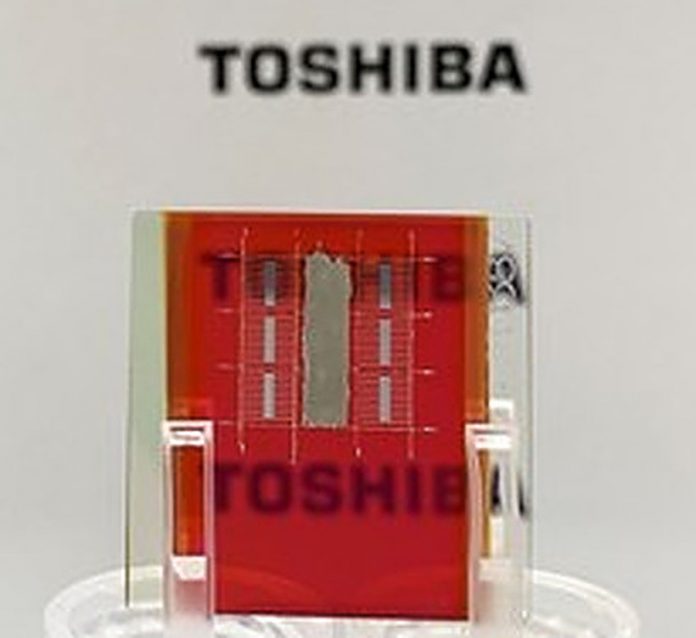Japanese electronics manufacturer Toshiba has announced an 8.4% power conversion efficiency for a transparent cuprous oxide (Cu2O) thin-film solar cell. The result, the company claims, is the highest efficiency ever reported for any cell of this kind to date.
The cell was conceived for use in electric vehicles and high-altitude platform station (HAPS) applications. “The tandem solar cell offers the promise of more efficient solar modules by combining top and bottom cells that generate power at different wavelengths,” the manufacturer said in a statement.
The record efficiency was achieved by reducing copper(II) oxide (CuO) and copper (Cu) impurities during the fabrication of the cell’s Cu2O layer and, in particular, by carefully controlling the oxygen flow. These impurities are due to the reactive sputtering deposition method used in the manufacturing of the cell. “We used a transparent conducting oxide as the bottom electrode and fabricated a low-impurity Cu2O thin film by reactive sputtering using argon and oxygen,” the Toshiba research scientists stated.
The Cu2O thin films were deposited by reactive sputtering in mixed oxygen and argon atmosphere on transparent conducting oxide (TCO) on a glass substrate with TCO composed of double layers of antimony doped tin oxide (ATO) and indium tin oxide (ITO). “The ATO layer was chosen for its good electrical contact with the Cu2O layer,” the researchers further explained. “The thicknesses of the Cu2O thin films were varied from 2 to 5 μm.”
The cell was tested under standard illumination conditions and was found to have an efficiency of 8.3%, an open-circuit voltage of 1.13 V, a short-circuit current of 10.63 mA/cm2, and a fill factor of 0.696. The Cu2O thin films showed the highest transmittance with the lowest impurity ratio.
The scientists also conducted a device simulation analysis and found that the cell has the potential to reach an efficiency of over 10% by decreasing the surface velocity at p–n interfaces and increasing n-type carrier density at the n-layer. “With support from Japan’s New Energy and Industrial Technology Development Organization (NEDO), Toshiba will continue research to achieve the 10% PCE target for top Cu2O cells,” the researchers said. “Toshiba is also cooperating with Toshiba Energy Systems & Solutions Corporation in the development of large-scale Cu2O solar cells that are the same size as mass-produced silicon solar cells.”
The solar cell was described in the paper “Highly transparent Cu2O absorbing layer for thin film solar cells,” published in Applied Physics Letters (AIP).






